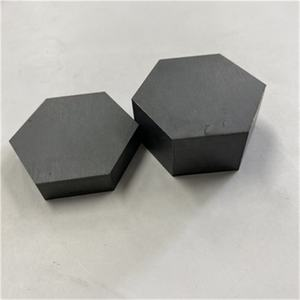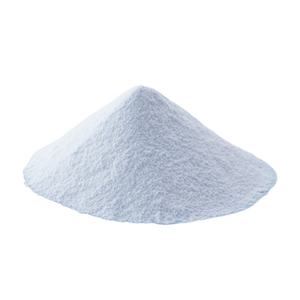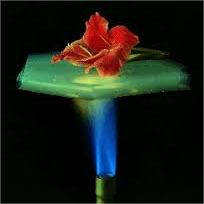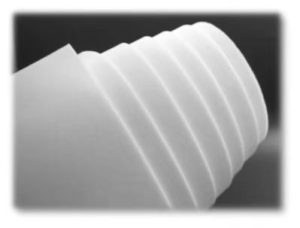Professional industry ceramic supplier, silicon nitride, silicon carbide, aluminum nitride and any other kinds of ceramics.
1. Introduction
Just 24 hours ago, a major materials science conference in Germany highlighted new advancements in high-temperature ceramics, with silicon carbide crucibles taking center stage due to their rising demand in renewable energy and semiconductor manufacturing. As industries push for more efficient melting and casting processes, knowing how to properly use and care for your silicon carbide crucible has never been more critical.

Whether you’re working in a foundry, lab, or artisanal metal studio, a silicon carbide crucible offers exceptional thermal conductivity, corrosion resistance, and mechanical strength—but only if handled correctly. In this guide, we’ll walk you through everything you need to know to get the most out of your crucible while avoiding common pitfalls.
2. Understanding Your Silicon Carbide Crucible
Silicon carbide (SiC) is an advanced ceramic material prized for its ability to withstand temperatures above 1600°C (2912°F). Unlike alumina (Al2O3) or zirconia crucibles, silicon carbide crucibles conduct heat rapidly and evenly, reducing hot spots and improving melt consistency.
It’s important to distinguish silicon carbide from similar materials like boron carbide vs silicon carbide—while both are ultra-hard ceramics, boron carbide is typically used for armor or abrasives, not high-heat containment. Similarly, silicon nitride (Si3N4) offers excellent thermal shock resistance but is less conductive; a silicon nitride crucible factory might produce specialized labware, but for general metal melting, silicon carbide remains the go-to choice.
3. Step-by-Step Guide to Using a Silicon Carbide Crucible
3.1. Preheating the Crucible
Never place a cold silicon carbide crucible directly into a hot furnace. Thermal shock is the #1 cause of premature failure. Instead, follow this ramp-up schedule:
- Start at room temperature and slowly increase to 200°C (392°F) over 30–60 minutes to drive off moisture.
- Hold at 200°C for 30 minutes.
- Gradually raise to 600°C (1112°F), then hold for another 30 minutes.
- Finally, bring to your operating temperature (e.g., 1200–1500°C) at a rate of no more than 150°C per hour.

This process ensures structural integrity and prevents microcracks that compromise performance.
3.2. Loading and Melting
Always load your charge (metal, glass, or alloy) gently. Avoid dropping heavy ingots into the crucible, as impact can chip the brittle ceramic lining. Fill no more than 75% full to allow for expansion and bubbling during melting.
Use compatible tools—preferably made of graphite or coated steel—to stir or skim. Never use iron or uncoated steel, as they can react with molten materials and contaminate your batch.
3.3. Cooling Down Safely
After use, allow the crucible to cool inside the furnace with the power off but the door closed. Rapid cooling in air or water will almost certainly cause cracking. A slow cooldown over several hours preserves the crucible’s life significantly.
4. Common Problems and How to Fix Them

4.1. Cracking or Spalling
If you notice surface flaking or cracks, it’s likely due to improper preheating or thermal cycling too quickly. Solution: Always follow the preheat protocol and avoid sudden temperature changes. Also, inspect for physical damage before each use.
4.2. Metal Penetration or Erosion
Over time, aggressive melts (like aluminum or copper alloys) can infiltrate the porous structure of lower-grade silicon carbide. To prevent this, choose high-density RBSiC (reaction-bonded silicon carbide) crucibles or apply a protective wash coating before first use.
4.3. Contamination Issues
Residue buildup from previous melts can affect purity. Clean gently with a soft brush—never abrasive pads. For stubborn deposits, heat the empty crucible to 800°C in an oxidizing atmosphere to burn off organics, then brush clean once cooled.
5. Maintenance and Storage Tips
Store your silicon carbide crucible in a dry, dust-free environment. Moisture absorption can lead to steam explosions during reheating. Place it on a clean shelf—not directly on concrete—and cover it with a breathable cloth.
Inspect regularly for hairline cracks, warping, or glazing (a glassy surface layer indicating chemical reaction). If any are present, retire the crucible to avoid catastrophic failure during operation.
6. Related Advanced Ceramic Products You Might Encounter
While focusing on your silicon carbide crucible, you may also work with other SiC-based components like silicon carbide ceramic tiles, silicon carbide burner nozzles, or silicon carbide ceramic tubes for furnace insulation. These share similar thermal properties and care requirements.
Don’t confuse them with silicon nitride ceramic parts—such as a custom silicon nitride heat shield or silicon nitride plate—which excel in different applications like turbine blades or wear-resistant bearings. Both are advanced ceramics, but their chemistries dictate distinct use cases.
Interestingly, some manufacturers now offer kitchenware like silicon carbide ceramic baking dishes or silicon carbide ceramic dinner plates, leveraging SiC’s thermal stability for oven-to-table serving. However, these are not suitable for industrial melting!
7. Conclusion
A silicon carbide crucible is a powerful tool—but only when treated with respect for its material limits. By following proper preheating, loading, cooling, and storage practices, you can extend its service life, ensure consistent results, and avoid costly downtime. Whether you’re melting precious metals or experimenting in a lab, mastering these steps turns a simple vessel into a reliable partner in high-temperature success.
Our Website founded on October 17, 2012, is a high-tech enterprise committed to the research and development, production, processing, sales and technical services of ceramic relative materials such as How. Our products includes but not limited to Boron Carbide Ceramic Products, Boron Nitride Ceramic Products, Silicon Carbide Ceramic Products, Silicon Nitride Ceramic Products, Zirconium Dioxide Ceramic Products, etc. If you are interested, please feel free to contact us.






